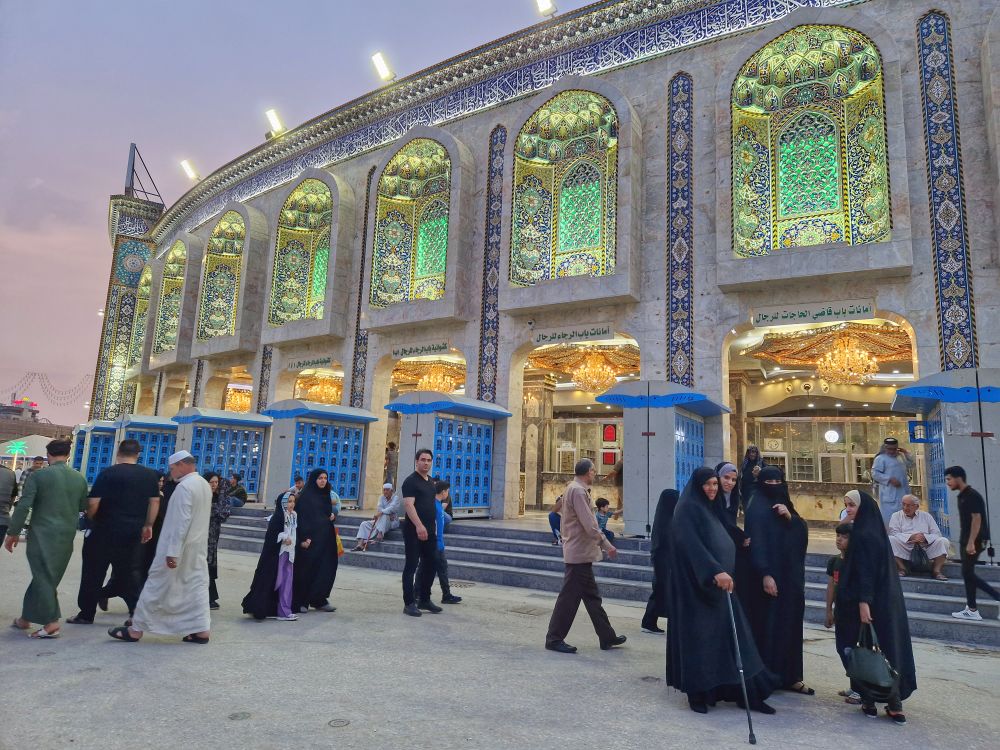When you think of a holiday, Iraq is the last place that comes to mind, as most people associate it with images of war. Few tourists have visited the country in the last four decades, as the war between Iraq and Iran and the rise of the Islamic State have been uninviting. Even if there were some enterprising travellers, obtaining a visa was a nightmare, so foreign visitors were virtually limited to pilgrims and official business.
It is hard to change this perception of the country, even though, thankfully, the war is a thing of the past. The country is at peace and the introduction of the VOA (visa on arrival) in 2021 has made life much easier for visitors – and Iraq really does welcome tourists with open doors and open hearts.
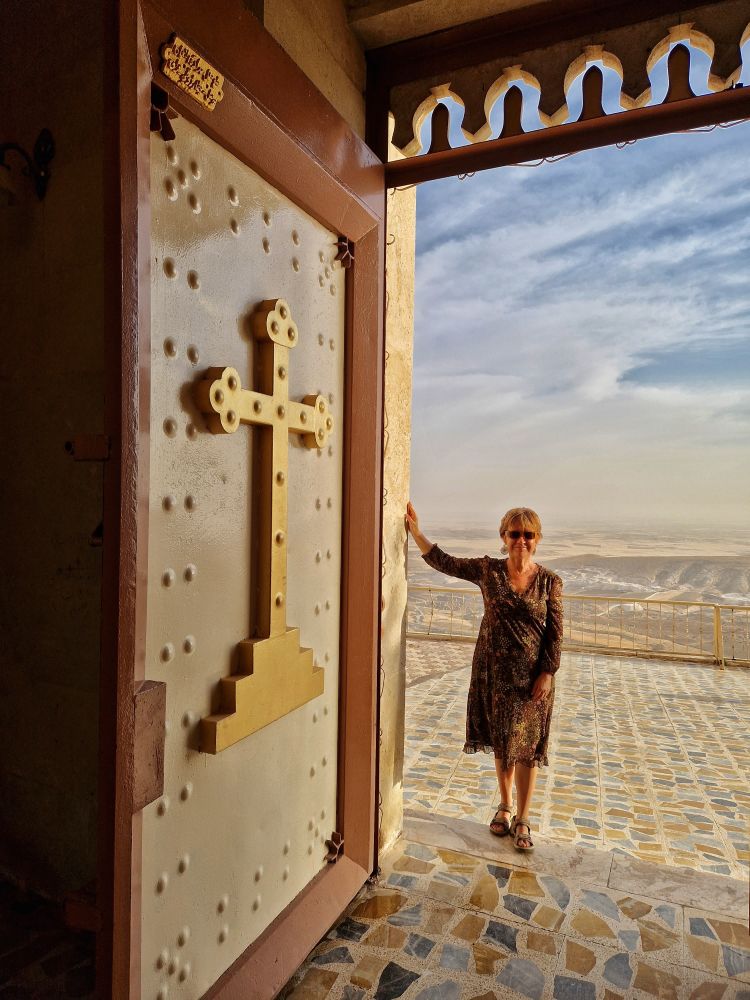
Today, millions of visitors come here every year, although the vast majority are pilgrims, mainly from Iran. I have not been able to find figures on the number of visitors who come specifically as tourists, but given that we have attracted attention everywhere, it can’t be many. Wherever our small group of ten Hungarians went, we made a big surprise and everyone from museum guards to restaurant waiters to soldiers asked us to take a selfie together. The latter surprised me the most, as our guide had told us that we were not allowed to take photos of military installations. However, the armed guards guarding the monuments and serving at the checkpoints were apparently not so strict. As soon as they saw us and heard that we were Hungarian tourists, they flashed a big smile from behind their grim ski masks and took out their mobile phones to take a picture with us.
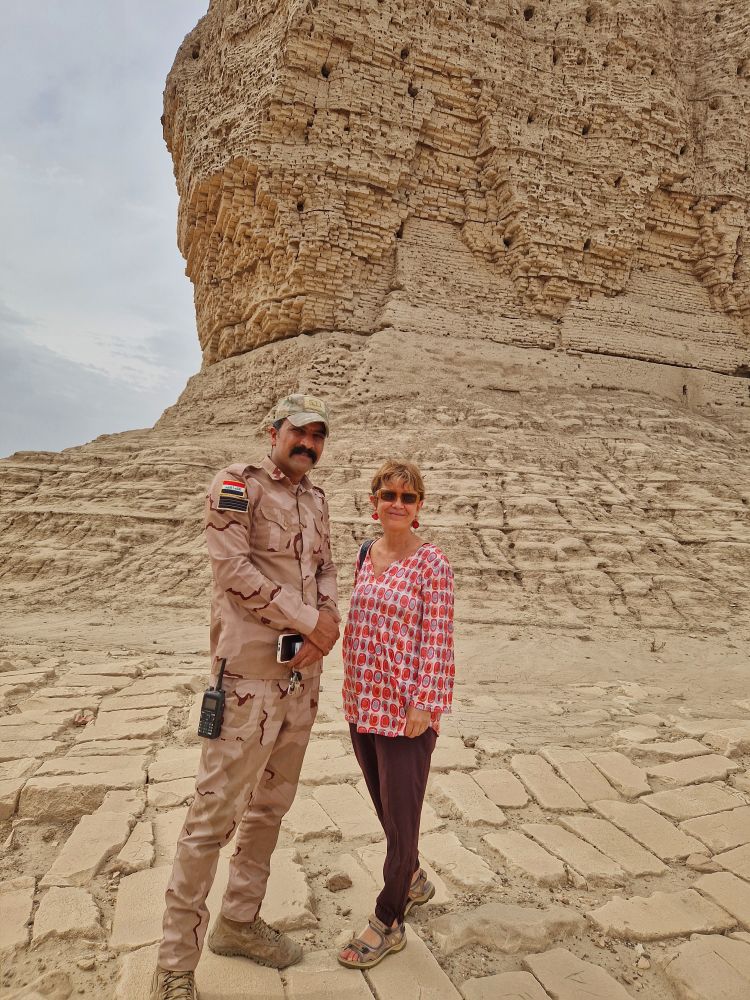
The painful past is now just a reminder of the many ruins, especially Mosul, where the destruction was perhaps the greatest. Also unusual for the traveller is the heavy military presence on the roads often stopped to check passports and monuments are heavily guarded. But even so, we never for a moment felt in danger, because we were treated with such overwhelming hospitality
that I have only experienced in Iran.
When we arrived in the morning, we drove through a bridge, and my attention jumped at the sound of the guide’s voice: “This is the Tigris river”. From my sleepless state I was immediately awakened and amazed: Tiger and Euphrates? My God, here I am in the cradle of civilization, where the first cities of the world stood, where writing and mathematics were invented, or where thousands of years ago the first law, the Hamurapi Code, was written.
I’m not saying that there aren’t more beautiful ruined cities elsewhere, because unfortunately in Iraq, what can be moved has been taken to museums abroad (mainly in Berlin and Paris), and the walls of ancient cities have often been razed to the ground by the Islamic State. But who wouldn’t be moved by the constant mention of names like Babylon, Nineveh and Mesopotamia – we’ve not only travelled in space, but also in time, back to the pages of an elementary school history textbook.
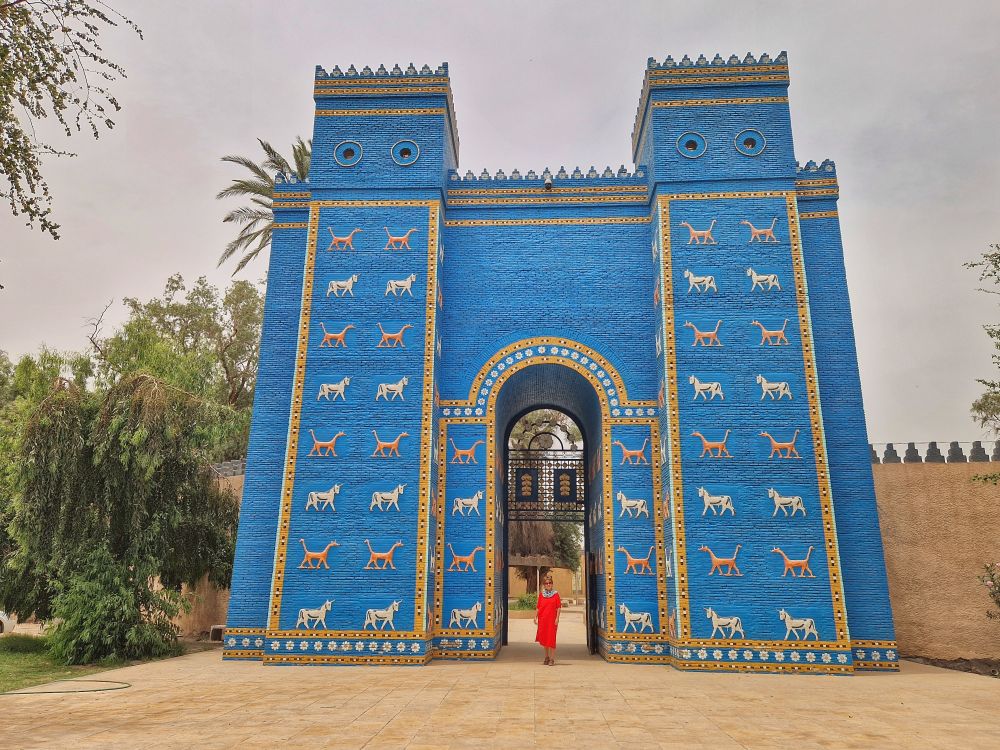
It was amazing to think that in 895, when we, Hungarians arrived in our new homeland, there were already serious schools here, translating Aristotle’s works into Arabic. Interestingly, since many Greek classical originals were lost, they were often translated back from Arabic into Latin.
Nice people, great sights… what more do you need? Good food? Well, you can’t complain about that either, every single meal we had was simply sensational. The only difficulty was that we were usually well fed by the starters, and only then came the grilled fish and meats.
Although the Iraqis are prepared in heart and soul for tourism, the practical implementation is still to come. Public transport is very rudimentary, there are few hotels that can be booked online, almost no one speaks English and visiting monuments can be cumbersome at times. It is therefore best to travel in a group or to find a local guide to help you through these difficulties.
In Iraq, wearing an abaya, or even a headscarf, is by no means compulsory or expected. In the capital or even in Kurdistan, it is not even commonplace in everyday life. Only in the Shiite religious centres (Karbala and Najaf) is the abaya compulsory, and you can buy it there for pennies. If you don’t wear it right, your hair will stick out, the local women will step up and fix it very kindly and with a smile, but no one ever frowned at you if you did something wrong.
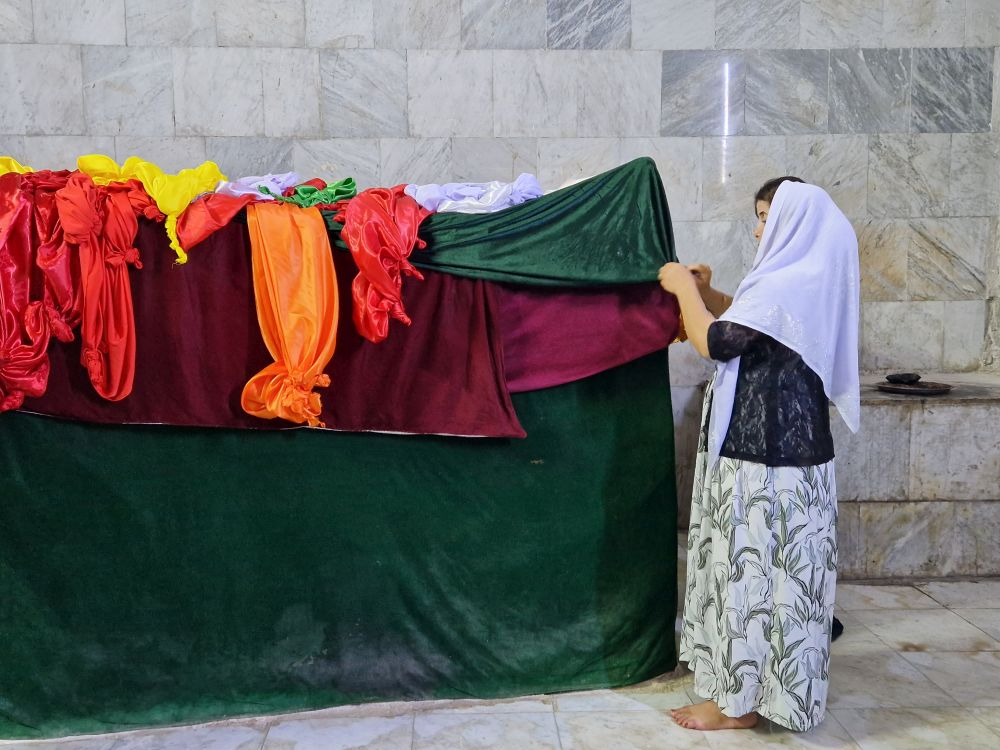
But let’s talk about the main attractions!
Baghdad
We started our exploration of the country in Baghdad, where we spent a good half day at the Iraq Museum, which reopened in 2022. It’s still dizzyingly rich, even though many of Iraq’s artefacts have been exported or looted during the war. Fortunately, much of it has been recovered, as these are noted, well-known masterpieces that would be very difficult to sell.
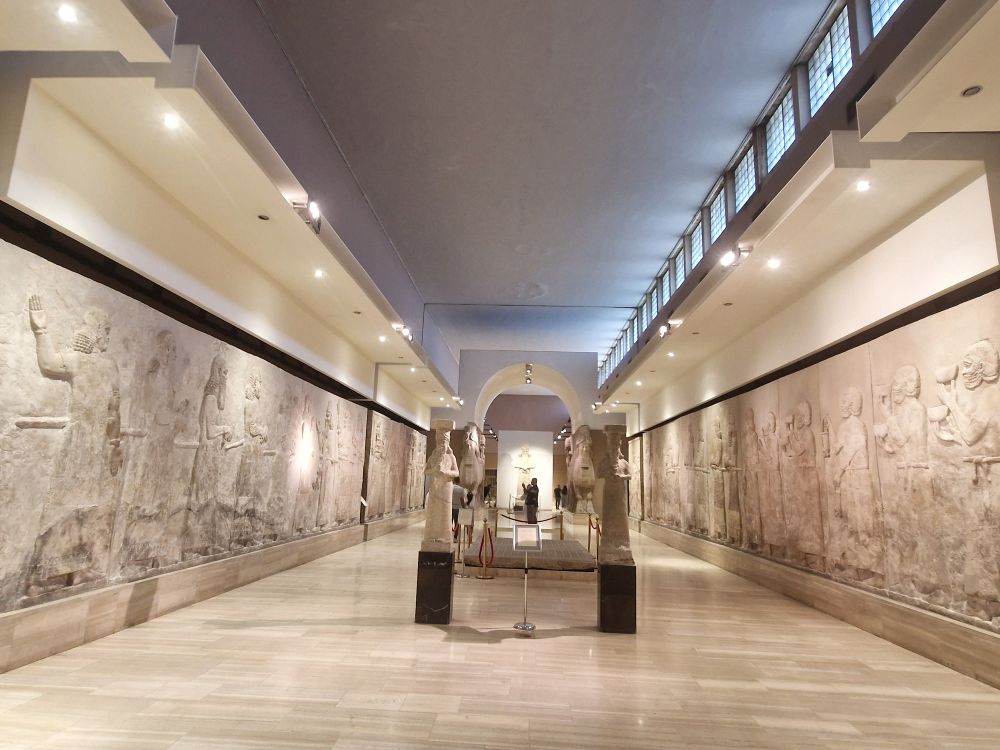
We also visited the city’s oldest surviving Qur’anic school in the al-Mustanshiriya quarter, where ancient scriptures were translated, and the former palace of the Abbasid caliphs – both beautifully restored.
We also visited Firdaus Square, where the statue of Saddam Hussein was toppled in 2003, symbolically marking the end of the dictator’s rule.
We also passed a Catholic church, which was also the scene of bloody events. Iraq used to be home to 3 million Christians, but now it is estimated that only 250,000 live there. In 2010, Islamic State suicide bombers killed 47 people in this church. The Pope will visit the church in 2021, when the situation is settled.
The Martyrs’ Monument is an iconic landmark in Baghdad, with a large blue dome resembling a sliced onion, and a sizeable museum in the basement. Hundreds of photographs showcase the heroes who died in the Iranian war, as well as the torture devices used in the recent past.
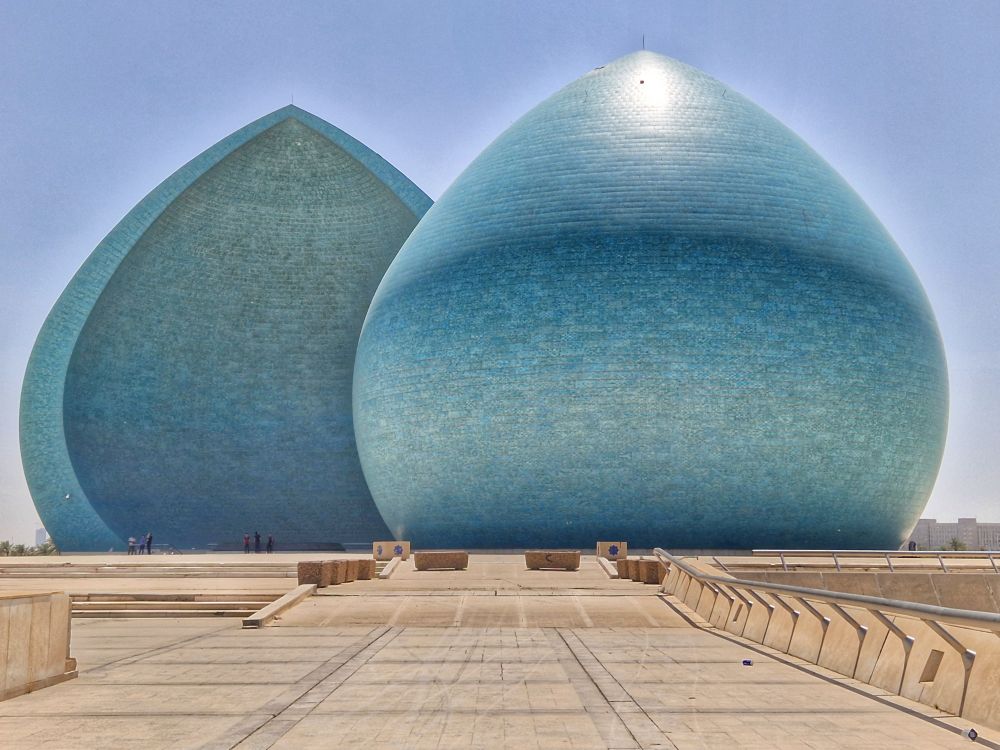
As well as the many historical activities, we had a lighter visit when we visited Agatha Christie’s riverside house, now standing in a secluded area. The abandoned house, which is in a rather poor state of repair, has a fantastic atmosphere even when it is in ruins, and I immediately began to imagine what a café with a riverside terrace and bookshop could be created here.
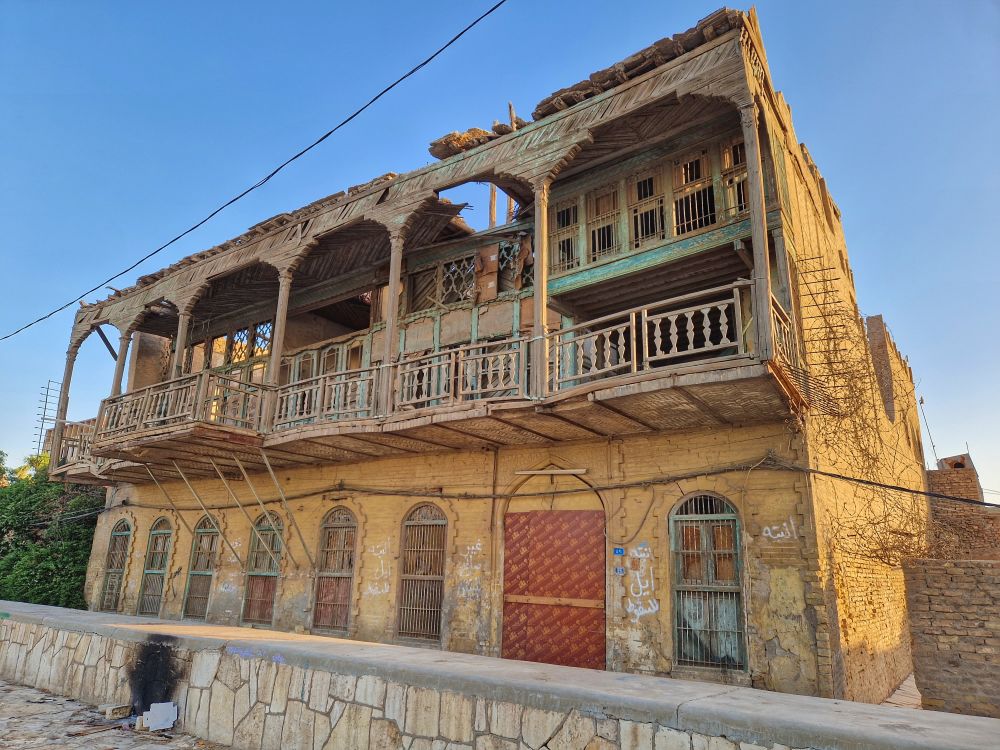
Ancient cities, monuments
It was a moving experience to visit Babylon the next day, even though I knew that the Ishtar Gate there was only a poor replica. The gate, reconstructed from the original elements, is in the Pergamum Museum, but nothing remains here (only the Iraq Museum in Baghdad has a few lion panels). Today, the Babylonian memorial site contains both unexcavated ruins in their original state and precisely reconstructed buildings. The bricks of the latter often bear a mark – Saddam Hussein had his name engraved on them to boast to posterity that he was responsible for the reconstruction.
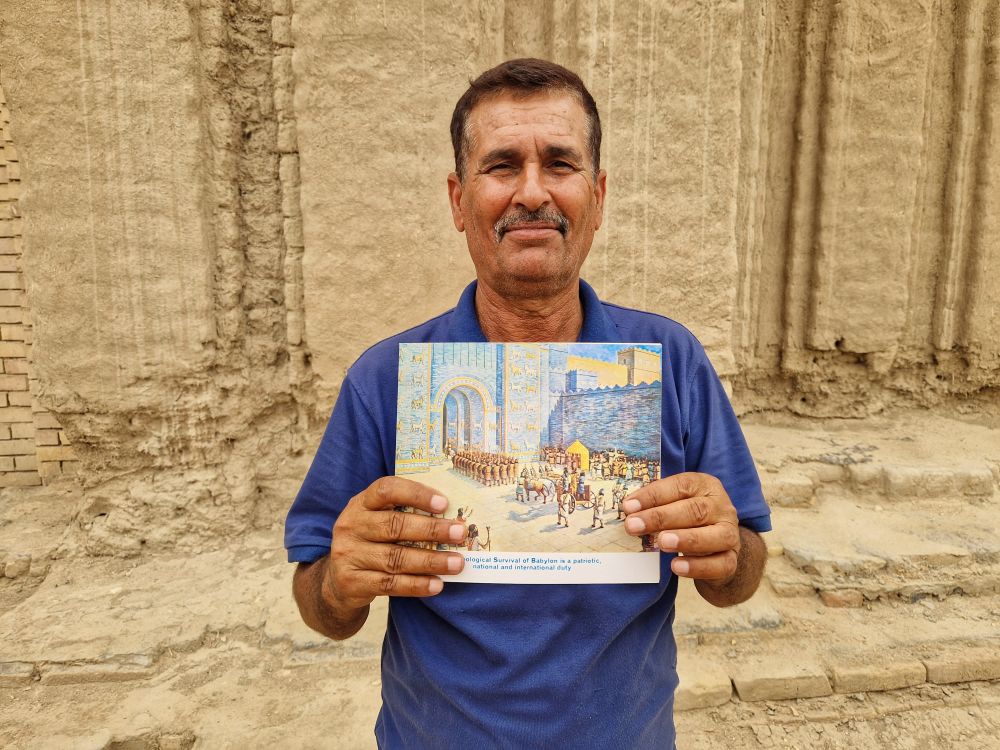
We also visited the Tower of Babel and its cool place. It was not a tower, but rather a ziggurat, and today only its outline is indicated by a ditch.
We visited Uruk, one of the most important cities in ancient Mesopotamia. The archaeological site is full of monumental mud-brick buildings decorated with mosaics of painted clay cones embedded in the walls and extraordinary works of art. Its significance is due primarily to the fact that it was here, around 3200 BC, that writing was born and that the cylinder seal, used by ancient Mesopotamians to mark personal property or sign documents, was developed. Uruk was once surrounded by a huge wall, which, according to tradition, was built on the orders of King Gilgamesh. He may have been the actual king of Uruk around 2700 BC and later became the hero of many stories and epics.
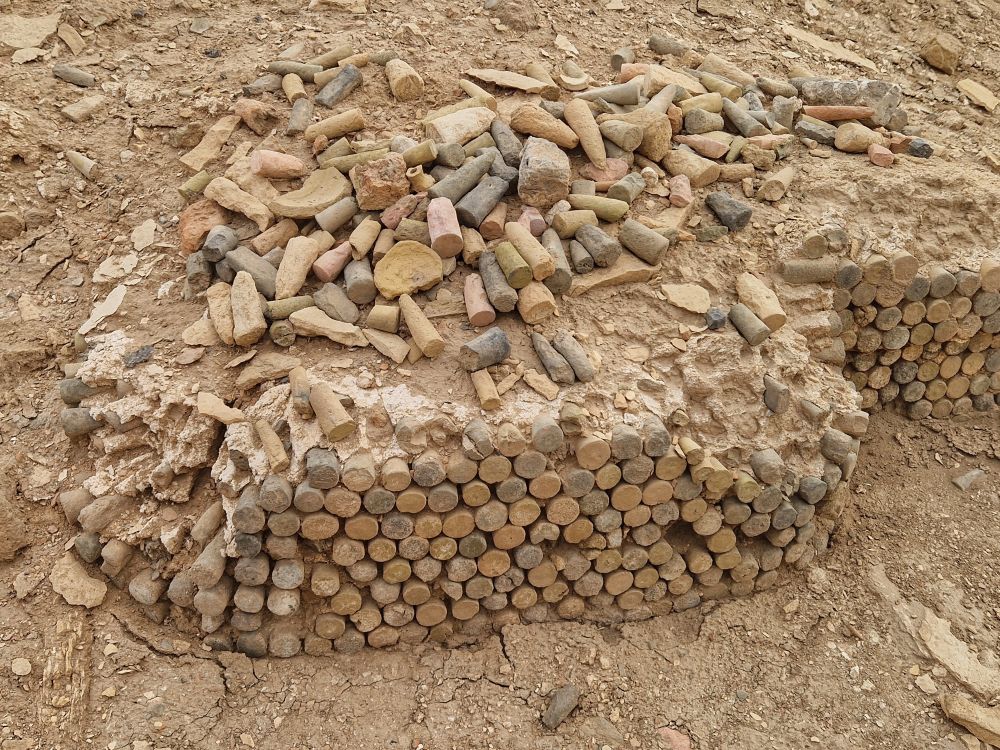
In the city of Ur stands the most famous and most spectacular monument of the Sumerian period, the Ur ziggurat. Along with the pyramids, the ziggurat, or tower temple, is the emblematic building of the ancient East – but, unlike the pyramids, it is not a burial place. At the top was a shrine containing the statue of the god to whom they were sacrificed. The temple was surrounded by huge storehouses and service buildings. The upper floors of the Ur ziggurat have been demolished, but it is still very impressive, having been restored under Saddam Hussein. Similar tower churches can be seen in Iraq and Iran.
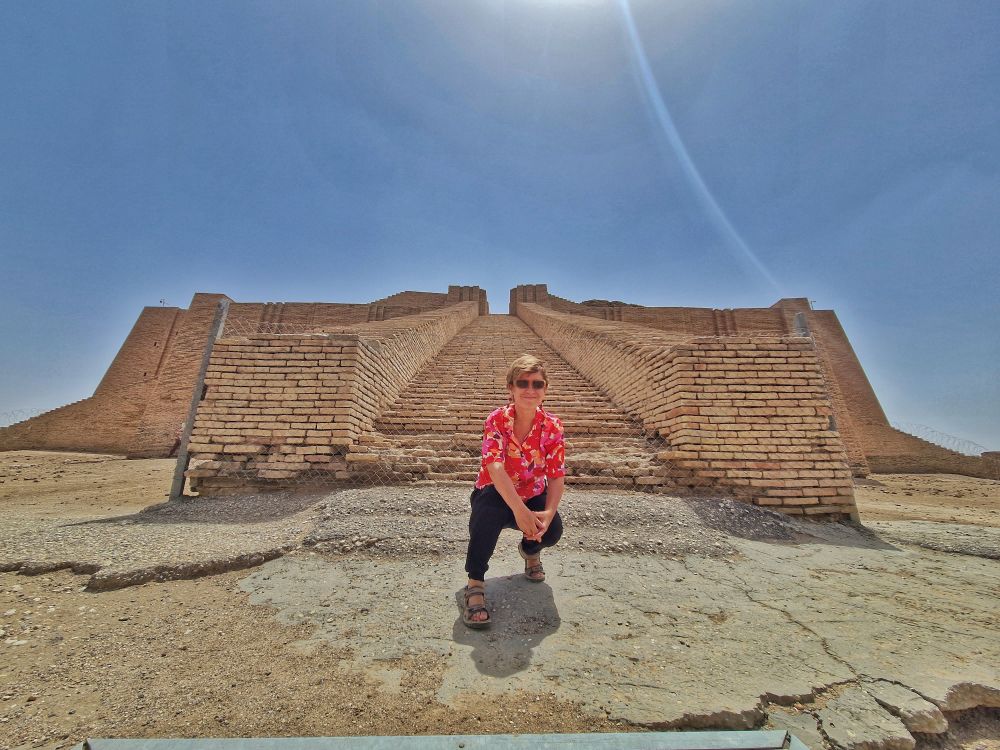
Uruk and Ur is an item on the UNESCO World Heritage List of six sites in Iraq – we visited them all during our ten-day tour.
One of these is Samarra, the former capital of the caliphs, where a very special 52-metre-high twisted minaret stands. Unfortunately, a small part of it had just recently been torn down, so it was closed off and we couldn’t climb it – one eye was crying but the other was laughing, as it was actually a smart move to close it and protect it from further damage. The minaret belongs to a mosque built in 851, the largest such building in the world when it was built.
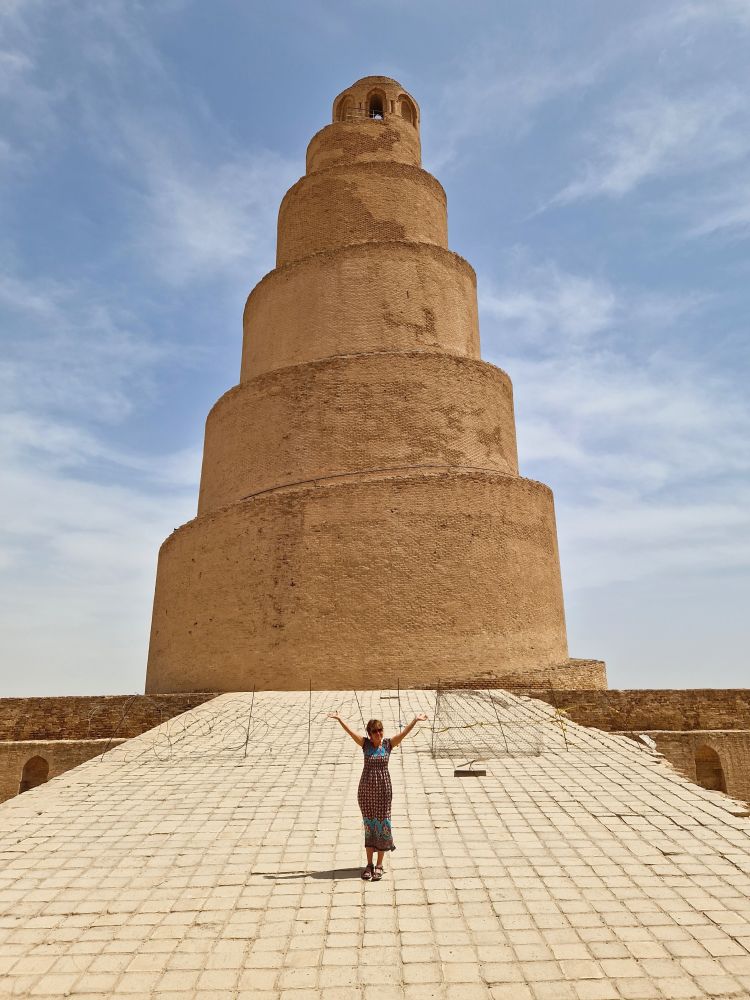
Also a World Heritage Site is Assur, which was the first capital of the Assyrian Empire from the beginning until the 9th century BC. Several royal tombs have been excavated in the area, and there is a huge, crumbling ziggurat that is not expected to live long – it has been badly weathered. It has obviously not been helped by the recent period of conflict, and there are plans to build a dam that could flood the whole area.
We also visited the Roman-era Hatra, another World Heritage Site and one of the few places that has not yet been destroyed by the Islamic State. Not for their sense of beauty, but because it was used as a stronghold for four years. They believed – and they were right – that if they set up camp here, the Americans would not bomb this important archaeological site.
Major mosques, religious centres
The two holiest cities in the country are Karbala and Najaf. Kerbala is famous for being the resting place of Hussein, the grandson of Mohammed, one of the most important Shiite saints, and Abbas, the eighth Imam. Najaf is perhaps even more important than Karbala, as it is the resting place of Ali, the son-in-law of Muhammad, the founder of the Shi’ite movement. For the Shiites, it is as sacred as Mecca is for the Sunnis, so there are always many pilgrims here. Next to the mosque is the world’s largest cemetery, the Valley of Peace, where an estimated 5 million people are buried.

It seemed to me that visiting the mosque was not just about paying respects to the holy graves, but also serving as a kind of community centre – we saw children doing homework, men and women alike taking naps, small groups chatting, singing, praying. We have seen tiny babies, 8-10 days old, weddings and funerals – their whole lives are interwoven with the presence here.
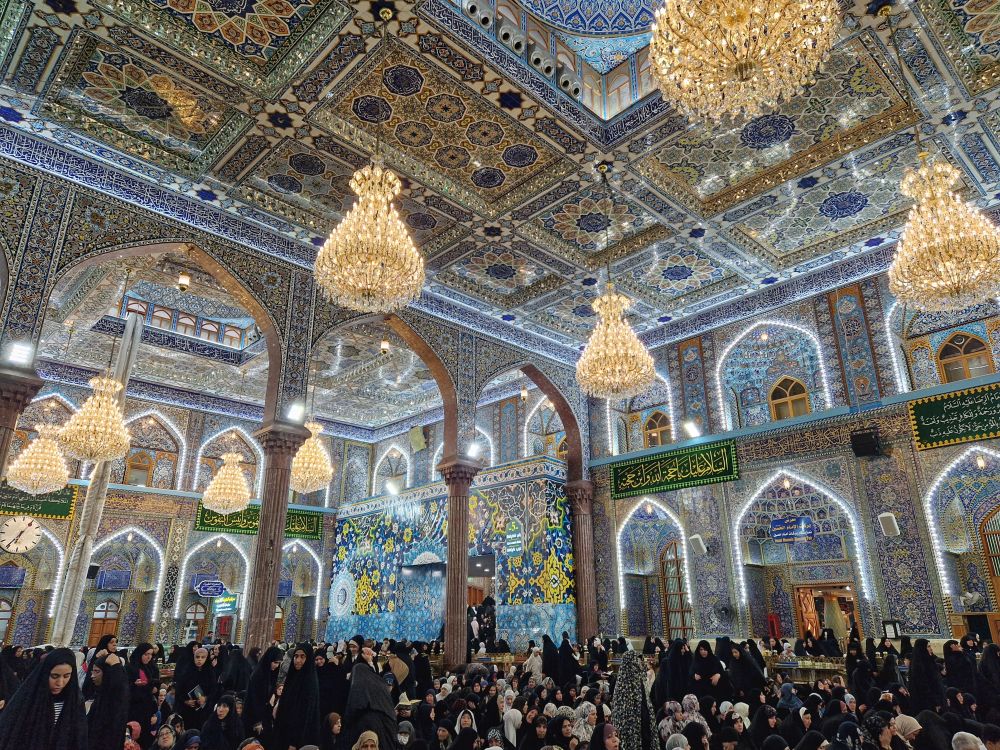
There are not only Islamic religious centres in Iraq, but also monuments of other religions, and even today active churches. One such example is Hormizd in Rab, one of the oldest Christian monasteries in the world and the former home of the Caliph Patriarch. Also an ancient Christian monastery is Mar Mattai, founded in 363. The monks lived not only in the building but also in caves in the mountains surrounding the monastery.
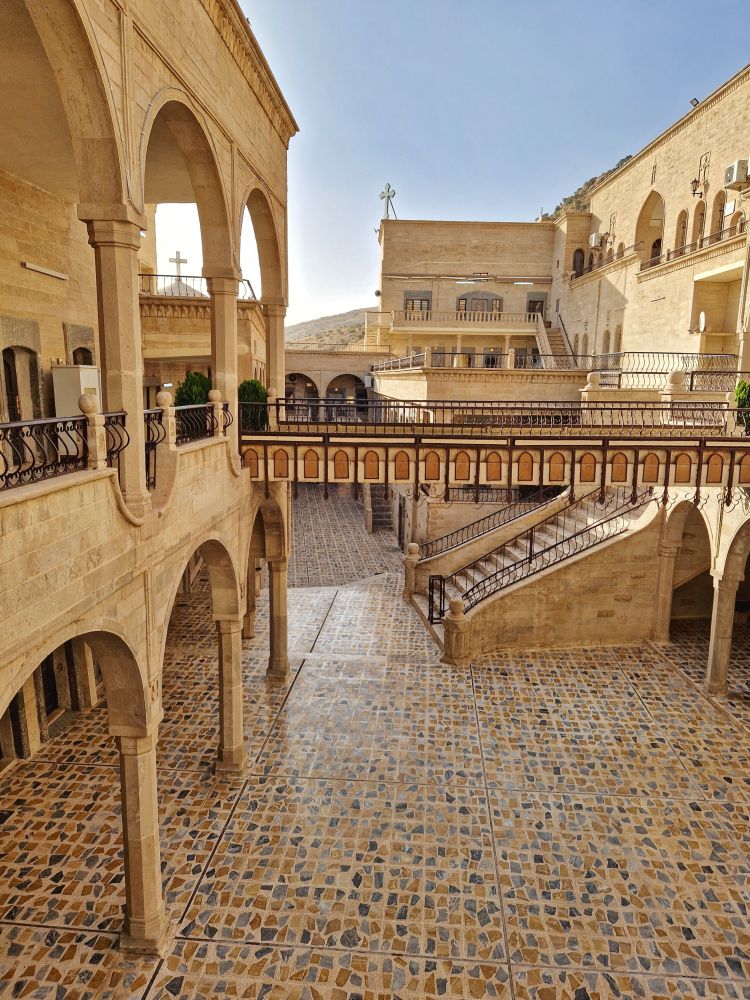
A special place is Lális, the main place of worship for the Yazidi community. The Yazidi faith grew out of the ancient Iranian religion, with just under one and a half million followers worldwide, most of them living here in Iraq. It is a religion that cannot be adopted, but must be born into, and its principles and rites are known precisely only to its adherents. Fortunately we were allowed to enter the shrine and even if we didn’t understand much of what the believers were doing, they were very friendly with us – they, like everyone else, asked us to take many selfies with them.)
A memory of the recent past
During his nearly 24 years in power, the Saddam Hussein regime built nearly 100 palaces/residences across the country to express his and his family’s power. These provided housing not only for the General himself, but also for party officials, their family members and many of their mistresses. It is estimated that some $2 billion was spent on these in the period following the first Gulf War alone.
After Baghdad fell to the Americans in 2003, Iraqi citizens looted and destroyed many of these palaces. Many others were occupied by US Marines, who used them for everything from command centres to internet cafés. Now that US troops have long since left, all of its former palaces have been taken over by the state. Some have been given over to government use, others have been left to decay, and there are two that are open to visitors.
The Saddam Hussein palaces that can be visited by tourists are the Saddam Palace in Babylon and the so-called Bird’s Nest Palace at the top of the Garra Mountains in Iraqi Kurdistan. The former is particularly spectacular: from the majestic foyer, spectacular staircases lead up to the gigantic halls, which offer a fantastic view of the Euphrates River and the palm groves that border it.
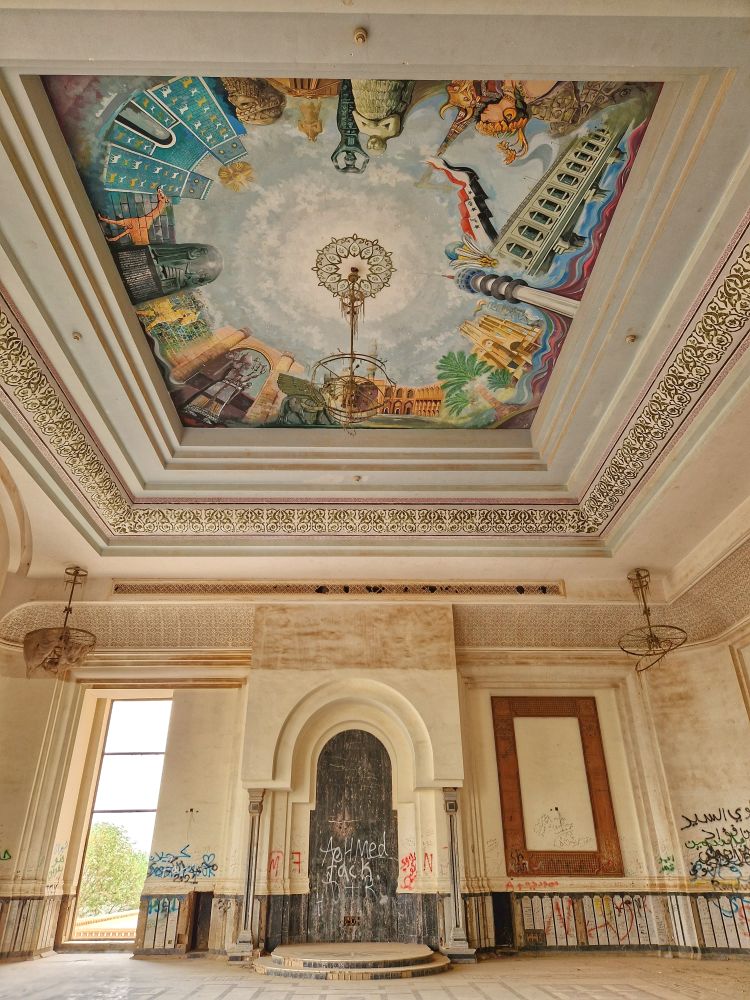
In the land of waterfalls, canyons and the Arabs of the marshes
As well as visiting the built heritage, there was time for excursions – Iraq is not short of natural beauty. Besides the lush green mountains of Kurdistan, we were particularly impressed by the picturesque canyons and popular waterfalls (Gali Alibag and Bekhal).

We also spent half a day in the Satt al-Arab marshlands, home to the so-called Marsh Arabs. As many people were hiding here during Saddam Hussein’s time, the dictator had the marsh drained and it suffered serious damage. Today, the water sources that feed the swamp have reopened and the area is once again populated. We glided along the winding canals in reed boats and had breakfast in thatched huts with our hosts.
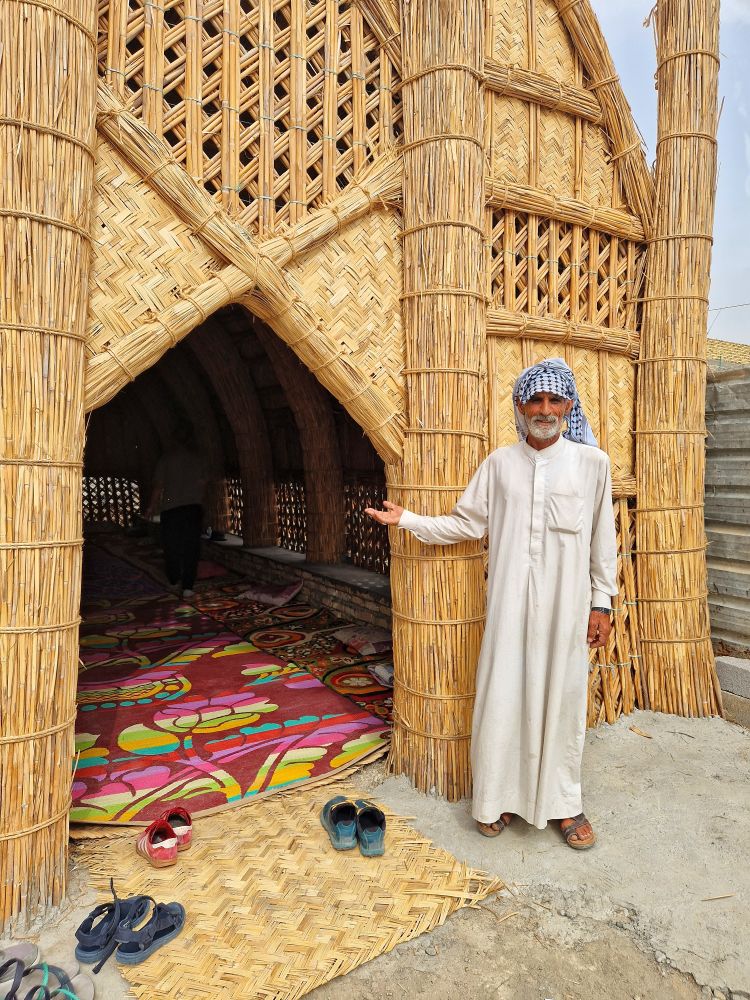
If there are not many tourists in Iraq now, it is not difficult to predict that this situation will change. If the peace proves to be lasting and word of it spreads in travel circles, there is no reason why this country should not become a very popular destination. There is plenty to see, the locals are friendly, the food is delicious, the prices are low – just a few more direct flights from major European cities and Iraq will be on the traveller’s map soon!
The article was originally published in National Geographic

